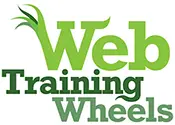The Most Flexible Featured Posts Widget You’ll Need
Recently I had a client that needed to display a grid of images in a sidebar widget, each one of which would link to a different page. Previously they had hard coded all the images and links as HTML in a text widget but this was understandably a pain for the client to maintain and update.
I previously used Special Recent Posts as my go-to plugin for this type of thing (although I’m not sure it could handle Pages) but the free version is no longer being updated so I needed a new solution. Fortunately I found the Flexible Posts Widget plugin – the best featured posts widget I think you’ll ever need.





 WordCamp Los Angeles is taking place September 21st & 22nd – two days of awesome WordPress fun, learning and connecting. If you haven’t bought your ticket yet, I recommend you do so ASAP since they are likely to sell out. As I write this there are only 60 remaining. You also want to make sure you can snag a T-shirt in the correct size. That’s right, in addition to 2 days of presentations and workshops, your $40 ticket also includes lunch and free T-shirt! Can’t say fairer than that. This is the cheapest, most value-packed tech conference around. If you are a WordPress user anywhere near the LA area, attendance is a must! You’ll have tons of fun, learn more than your head can hold, and will connect with other users, developers, designers etc. WordCamps really embody the spirit of the community – everyone freely shares ideas and you can ask all your burning WordPress questions.
WordCamp Los Angeles is taking place September 21st & 22nd – two days of awesome WordPress fun, learning and connecting. If you haven’t bought your ticket yet, I recommend you do so ASAP since they are likely to sell out. As I write this there are only 60 remaining. You also want to make sure you can snag a T-shirt in the correct size. That’s right, in addition to 2 days of presentations and workshops, your $40 ticket also includes lunch and free T-shirt! Can’t say fairer than that. This is the cheapest, most value-packed tech conference around. If you are a WordPress user anywhere near the LA area, attendance is a must! You’ll have tons of fun, learn more than your head can hold, and will connect with other users, developers, designers etc. WordCamps really embody the spirit of the community – everyone freely shares ideas and you can ask all your burning WordPress questions.